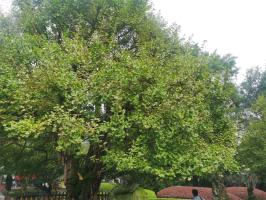How does planting trees offset carbon emissions?
Carbon emissions result from human activities such as the burning of fossil fuels, deforestation, and industrial processes. These emissions contribute to climate change and its devastating consequences. To combat this, a method that has gained momentum is planting trees as a means to offset the carbon emissions that we produce. But how exactly does planting trees help and how effective is it? Here's a closer look.
How does planting trees work?
As trees grow, they absorb carbon dioxide (CO2) from the atmosphere through photosynthesis. The carbon is then stored in the tree's roots, leaves, and trunk. This process is called carbon sequestration, and it allows trees to act as carbon sinks. In other words, planting trees helps to remove CO2 from the atmosphere, reducing the amount of greenhouse gases that contribute to climate change.
How effective is planting trees in offsetting carbon emissions?
Studies have shown that planting trees is an effective way to offset carbon emissions. In fact, one mature tree can absorb up to 48lbs of CO2 per year, and a single acre of trees can absorb the same amount of CO2 produced by driving a car 26,000 miles. Therefore, planting trees in areas where deforestation has occurred or in urban areas where air pollution is high can make a significant impact in the fight against climate change.
What are some of the benefits of planting trees besides carbon offsetting?
Planting trees provide benefits beyond carbon offsetting. Trees have a cooling effect as they provide shade and release water vapor through their leaves. This helps to reduce the urban heat island effect, where cities are significantly warmer than the surrounding rural areas. Trees can also improve air and water quality, prevent soil erosion, and provide a habitat for wildlife. Furthermore, trees can be a source of food and medicine for communities.
Conclusion
The importance of planting trees in mitigating climate change cannot be overstated. As we continue to emit carbon into the atmosphere, planting trees offers an effective solution to offset the impact of our actions. Beyond its carbon-offsetting property, trees provide numerous benefits to human beings and the environment. As such, efforts to plant trees must be continued and increased globally.

 how many times do yo...
how many times do yo... how many planted tre...
how many planted tre... how many pine trees ...
how many pine trees ... how many pecan trees...
how many pecan trees... how many plants comp...
how many plants comp... how many plants can ...
how many plants can ... how many plants and ...
how many plants and ... how many pepper plan...
how many pepper plan...






























